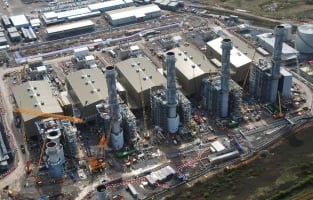 We regularly work with consultant engineers and architects on the design of natural ventilation systems for power plants – and the number of projects is on the increase.
We regularly work with consultant engineers and architects on the design of natural ventilation systems for power plants – and the number of projects is on the increase.
Natural ventilation has a number of advantages over mechanical ventilation and number one on the list is often to achieve a reduction in the amount of energy required to manage heat levels.
However, it’s more complex than just specifying the square meterage required. Every louvre/ventilator coefficient (Cv) is different and it’s this that will determine the amount, size, and cost of the equipment required to meet the design.
For example, if you need to achieve 15m² aerodynamic free area (AvCv) and the selected product Cv is 0.5, you would require 30m² of equipment. If the Cv is 0.15 you would require 100m². That’s quite a difference!
It’s also important to position the equipment as detailed in the design calculations. These calculations take into account the height between the low level and high level equipment. If the equipment is positioned incorrectly then the required AvCv will change and the system will not operate as designed.
Therefore the architect or consultant engineer has to choose the right product at the design stage. Otherwise, when it comes to build and the main contractor doesn’t know the right product specification to use, your project can be hampered by equipment taking up too much room or simply the design not meeting the technical requirements of managing heat with ventilation.
Product Considerations
There are a plethora of natural ventilation products available. Some aspects to consider when selecting your product include:
- What level of rain defence is required?
- Is weathered ventilation required?
- Is attenuation required?
- How will the system be controlled?
- How will the equipment be fixed, weathered, and supported?
- What is the Cv of the product?
- Is smoke ventilation also a requirement?
Summary
Balancing your performance requirements against space constraints and cost can be a complicated process. Talk to your natural ventilation specialist at an early stage of the design. They can help you to:
- Select the most suitable products to meet the building requirements.
- Size and position the equipment to meet the design requirements.
- Integrate the equipment into the building.
- Select the most suitable control system.
- Provide budget costs.
Colt design engineers are available to help assist with product selection and can advise you on choosing the right product for natural ventilation.
We have many examples of successful installations in power plants and energy plants. Why not find out more about how projects in this sector are delivered successfully to achieve the right result.
 Graeme Clark is a Senior Consultant for Colt UK and specialises in the design and product application of energy efficient HVAC and smoke control systems.
Graeme Clark is a Senior Consultant for Colt UK and specialises in the design and product application of energy efficient HVAC and smoke control systems.


